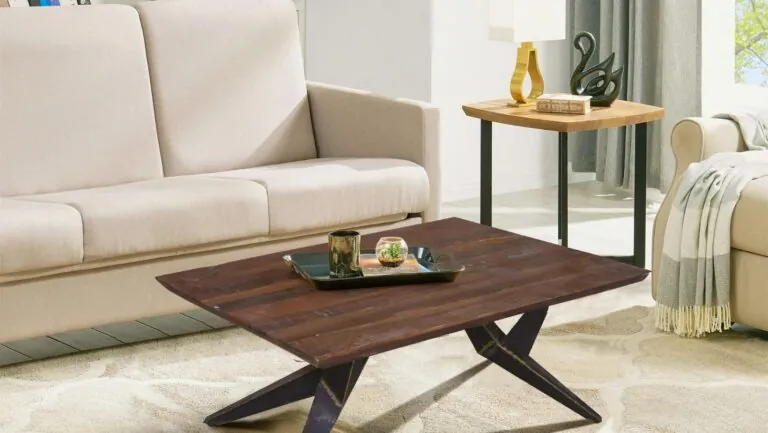When it comes to moving antiques, it’s not just about packing up old trinkets. It’s a high-stakes game of Tetris where one wrong move could turn a priceless heirloom into a very expensive paperweight. That’s where specialty movers come in, armed with bubble wrap and a sense of humor to match their expertise. They know the ins and outs of transporting everything from delicate porcelain to heavy wooden furniture, ensuring your treasures arrive in one piece—without the added stress of a heart attack.
Choosing the right movers can make all the difference. With their tailored services, these pros treat your antiques like royalty, offering a level of care that even the most devoted collectors can appreciate. So, if you’re ready to ditch the DIY disaster and let the experts handle your vintage gems, buckle up! It’s time to discover why specialty movers are the unsung heroes of the antique world.
Table of Contents
ToggleImportance of Specialty Movers for Antiques
Moving antiques presents unique challenges that require specialized attention. Specialty movers possess the expertise to handle delicate items safely. Their training equips them to manage the weight and fragility of valuable antiques. Examples of such items include vintage furniture, fine art, and rare collectibles.
Professional movers utilize custom packing materials, like bubble wrap and specialized crates. These materials protect antiques during transit, minimizing the risk of damage. Experience in navigating various moving environments further distinguishes specialty movers. They understand how to maneuver through tight spaces and tricky staircases without compromising the integrity of the antiques.
Collectors benefit from the tailored services offered by specialty movers. These professionals create personalized moving plans based on the specific needs of each item. This approach ensures that even the most fragile pieces receive appropriate care.
Insurance coverage is another critical aspect of hiring specialty movers. Many companies provide insurance options specifically for antiques, offering peace of mind during the moving process. Collectors can entrust their valuable items to movers who prioritize safety.
Skills such as securing items properly for transport further enhance the importance of these movers. By using appropriate techniques, such as crating or padding, they keep antiques stable during the journey. Access to specialized equipment, like dollies and furniture pads, ensures safe handling.
Trust allows collectors to focus on their passion for antiques. Instead of worrying about potential damage during moves, they can concentrate on the excitement of their collections. Specialty movers act as essential allies, enabling a seamless transition for these treasured items.
Types of Antiques That Require Specialized Moving
Antiques encompass a wide variety of items that demand specialized moving techniques. Furniture, artwork, and collectibles represent key categories where careful transport is essential.
Furniture
Antique furniture often carries significant weight and delicate finishes, requiring specialized moving. Items like ornate tables, carved chairs, and vintage vans need appropriate handling to prevent scratches or structural damage. Movers inspect each piece and utilize materials like padded blankets and custom crates for protection. Expertise in disassembling larger items ensures safe transport through tight doorways and staircases.
Artwork
Fine art includes paintings, sculptures, and mixed media pieces, necessitating specialized attention. Each artwork type requires custom packing solutions, such as acid-free materials for paintings and shock-resistant crates for sculptures. Specialty movers assess the artwork’s value and fragility, providing tailored handling to prevent damage. Secure transportation methods, including climate-controlled vehicles, protect artwork during transit.
Collectibles
Valuable collectibles include porcelain figurines, vintage toys, and rare coins, all requiring careful protection. Collectors often face the challenge of moving fragile items safely from one location to another. Specialty movers use custom packaging designed for each collectible type, ensuring they remain intact during the entire moving process. Knowledge of the collectibles market helps movers apply the best techniques for preservation and transport.
Choosing the Right Specialty Movers
Selecting the right specialty movers ensures a smooth transition for valuable antiques. Evaluating qualifications and experience alongside insurance and liability coverage is crucial.
Qualifications and Experience
Specialty movers should possess relevant certifications and training in handling antiques. Experience in moving delicate items enhances their skill set, allowing for informed decisions during transport. Look for movers with a proven track record in transporting vintage furniture and fine art. Assessing online reviews helps gauge previous clients’ overall satisfaction. Movers equipped with specialized tools and techniques effectively manage the particular challenges posed by antiques. Investigating their understanding of various materials further confirms their capability to protect valuable items during transit.
Insurance and Liability Coverage
Insurance coverage provides essential protection for antique shipments during moving. Specialty movers often offer different levels of liability coverage tailored to clients’ needs. Understanding the specifics of their insurance policy is vital, as it outlines potential claims for damaged or lost items. Opting for movers with adequate insurance ensures peace of mind throughout the process. Discussing coverage options can yield information on exclusive policies designed for high-value antiques. Before finalizing contracts, verifying the insurance status of specialty movers safeguards valuable possessions against unforeseen circumstances.
Tips for Preparing Antiques for Moving
Preparing antiques for moving requires careful consideration and meticulous planning. Proper packing and inventory management protect valuable items from damage during transit.
Packing Methods
Packing methods play a crucial role in safeguarding antiques. Use acid-free tissue paper to wrap fragile items, providing a protective layer against dirt and moisture. Employ bubble wrap for additional cushioning, especially for delicate pieces like porcelain figurines. Custom crates should be used for larger antiques, ensuring a snug fit to minimize movement within the crate. Movers often utilize padded blankets for furniture, protecting surfaces from scratches and dents. Lastly, clearly label each box to indicate fragile contents, enhancing the attention given during handling.
Inventory Management
Inventory management simplifies the moving process and helps keep track of valuable antiques. Create a detailed list of each item, noting its condition before the move. Photographs can provide visual documentation of damages that may occur during transit. Assign numbers to items for easy reference and organization. Movers often recommend using an inventory tracking app to streamline the process, making it easier to convey item information. Regularly updating the inventory during packing ensures nothing gets overlooked, maintaining accountability throughout the move.
Conclusion
Choosing specialty movers for antiques is a crucial decision for collectors and enthusiasts alike. Their expertise ensures that valuable items are handled with precision and care. With tailored services and specialized equipment, these professionals minimize the risk of damage during transit.
By investing in specialty movers, individuals can enjoy peace of mind knowing that their cherished antiques are in capable hands. The right movers not only protect these treasures but also enhance the overall moving experience. This allows collectors to focus on their passion while trusting that their antiques will arrive safely at their new destination.




